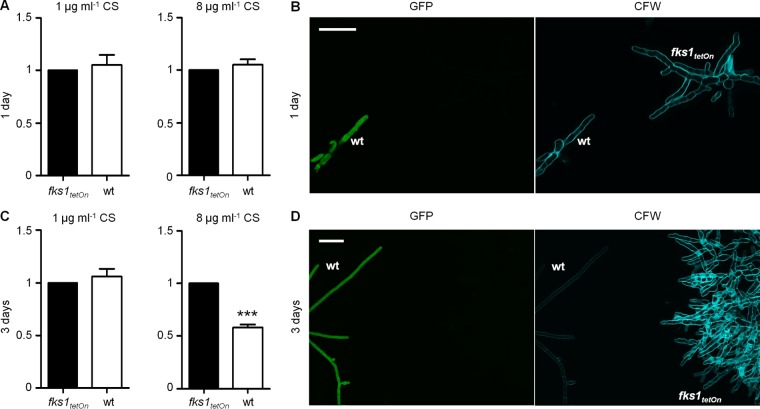FIG 6.
Paradoxically growing hyphae exhibit significantly less chitin than their echinocandin-inhibited progenitor microcolonies. Conidia of the wild type expressing GFP and fks1tetOn were inoculated in AMM on coverslips. The medium was supplemented with 1 μg ml−1 or 8 μg ml−1 CS. After 1 day (A and B) and 3 days (C and D) of incubation at 37°C, hyphae were fixed, stained with calcofluor white, and analyzed with a confocal laser scanning microscope. (A and C) The chitin content was quantified by comparing the calcofluor white fluorescence signal intensities of at least 7 and up to 17 (8 μg ml−1 caspofungin; 3 days) hyphal sections per strain and condition. The signal intensities of the wild type were normalized to those of the fks1tetOn strain under repressive conditions (baseline correction; the fluorescence intensity of fks1tetOn was set to 100%). The statistical significance (***, P ≤ 0.001) was calculated with a two-tailed unpaired (assuming equal variances) Student t test. The error bars indicate standard deviations. (B and D) Representative images of GFP fluorescence and calcofluor white (CFW) fluorescence after the indicated times of incubation. Scale bars, 25 μm.

